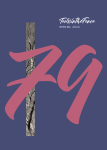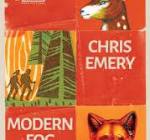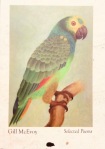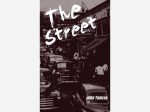
Ambiguity begins with the cover of this book, the layout of its title ‘Games of Soldiers’. Components here are disrupted like war-torn buildings as letters, maze-like, offer no clues as to meaning. This could be a structure capable of infinite dismantling and re-arrangement, precise as a battalion but without direction or exit. Likewise, the contents beyond the title present an enigma. There is no straightforward route to understanding. Connections in this ‘intolerable confusion of categories’ depend on shifts of repetition and mood.
‘Games of Soldiers’ comprises a series of prose poems and occasional verse. These are divided into three sections: the first has one passage, parts two and three are made up of eight pieces. There is no narrative apart from the suggestion of a film being made. Reading the mood of this collection feels a bit like reading the weather – a dominant motif throughout with rain being the most significant. The setting begins with a neutral sky and ‘faint dampness in the air’. This, we are told, might be ‘the beginning of precipitation’ – a word that implies things falling down and not just as weather. Bombs come to mind, buildings that collapse, the destruction of homes.
Certainly, the passages are imbued with rain. The poem ‘Salvage’ starts with the single word ‘Rain’. Here the roadway is ‘bombarded by water’. The impersonal camera films through a lens, through window glass, through heavy rain. The scene is distorted and warped. In the last poem of the final section the film seems to show a swimmer reaching his former house, now shockingly empty, rusted and locked. Short paragraphs begin ‘It rains’, ‘It pours’, ‘It’s teeming’. In the penultimate paragraph drips of rain mingle with tears ‘in rivulets’. The poem ends with a fear of water and a writer who ‘is afraid to lift her pencil from the paper, for the feeling that will flood her.’
Definitions, multi-meanings and etymology are used to the full in this collection. The poem just mentioned, ‘Salvage’, is an example of this. The word itself implies the rescue of damaged leftovers, of something that has been wrecked. Visually, ‘salvage’ suggests ‘savage’ with all its associations, the origin of the word is from Old French ‘salvare’ – ‘to save’. There are connotations with ‘saviour’, of salvation before it is too late.
This is the effect of one word. But the motif of destruction is present throughout, shocking us with contrasts as ‘brand new houses’ reveal they are structures of fear: ‘Every evening walking home from the train, she has the same fear – of rounding the corner and finding nothing there’. There are sirens and shelters, communal refuges in name only, where smell is sickening, panic is palpable and ‘the walls rock and shudder.’ Children are left asleep in their beds during the bombing rather than be woken to enduring ‘terror’. Later, when the damage becomes total, the reader may wonder what happened to those sleeping children.
Images of killing are brutal, befitting the title ‘Games of Soldiers’. War, murder, suicide, the extermination of a rat by poison, flies that fed on the rat’s decomposing corpse now mummified under the floorboards.
But these and other images are only glimpses, blurred and awry, rarely seen close up but viewed with constant surveillance as through a camera lens. ‘With what complacency we also watch’ says the narrator with the detachment of the observer. Terror may be everywhere but one would have to ‘spool through for hours and hours, to find anything significant.’ Every night, in this cinematic scenario, footage is deleted ‘from human history.’
Grim content with a Nordic noir darkness. But I found Mary Michael’s collection totally enthralling with its repetition of details and motifs, its skill with using double meanings and etymology so that a word like ‘wake’ implies not only waking up from a dream or nightmare but also the sense of a vigil, of watching over the dead and protecting them from evil spirits. Chilling as the effect may be, I appreciate the impression of strangeness in this book, the sense of mise en abyme, of being in an abyss or a world of mirrors, an image infinitely recurring within a copy of itself, a foreshadowing, a story within a story, recursive and endlessly turning back.
Mandy Pannett 27th February 2024









